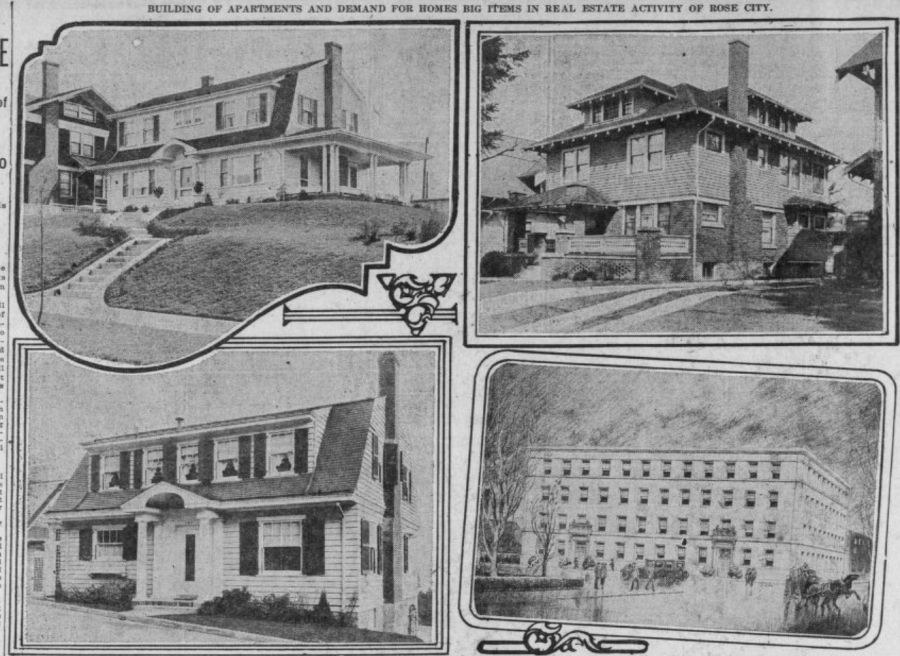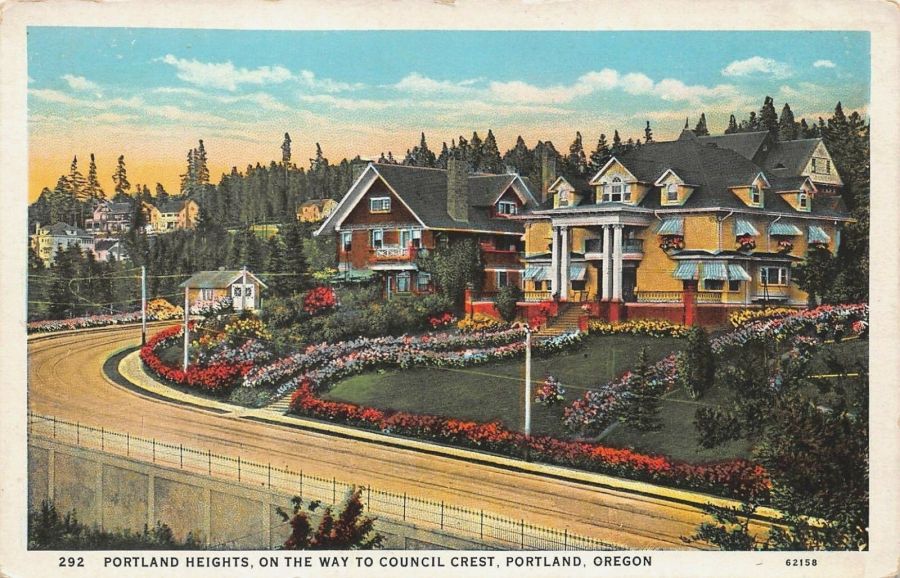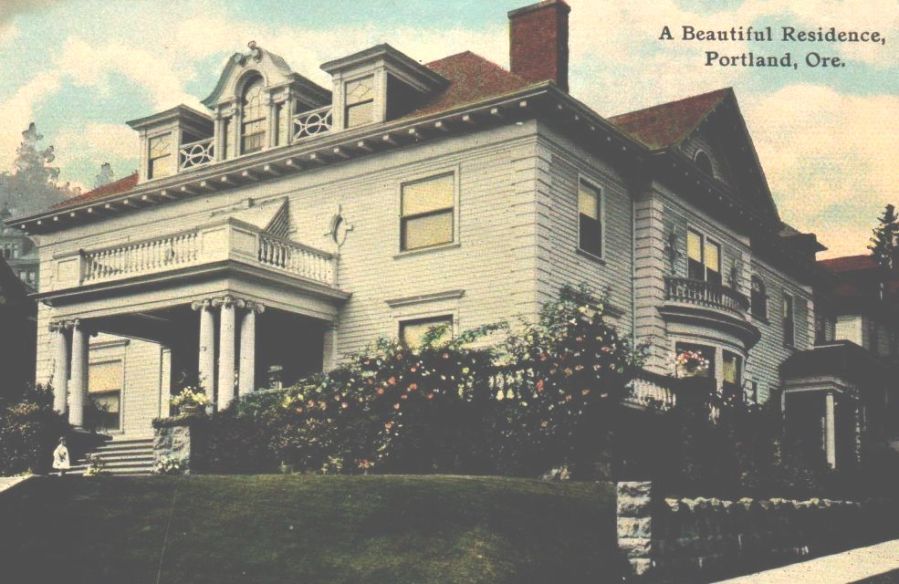Once upon a time I wrote for Neighborhood Notes, a cool neighborhood, community-focused digital publication based in Portland. The now-defunct site went offline a couple of years ago but the editors have graciously let me repost a couple of the posts I wrote for them. (I’ve done my best to update posts but have pretty much left them untouched.)

It’s no secret that Portland homeowners are into their homes. Like really into them. People here just don’t have a simple backyard garden—they grow produce that can feed the whole block. Merely painting a home doesn’t fly. Many homeowners will not only find the most accurate colors to match the palette of their appliances and countertops, they’ll match the vibe and natural colors of the neighborhood, and use non-toxic, low-VOC paints, of course. In other words, the homes we live in are very important to us. And thankfully many homes across Portland—the cute bungalows, the elegant tudors, the sturdy Craftsman homes and the venerable Four Squares—get the care they deserve through thoughtful renovations that match the home’s history, original style and architectural integrity.
Visit Rejuvenation Hardware
A logical place to start is Rejuvenation Hardware, 1100 SE Grand Avenue. This well-known local showroom is the country’s leading manufacturer of period-authentic lighting and hardware and can help you choose everything from the correct light fixture, door knob and window to match the style of your home. It’s also a safe bet to say they know the style of house you own.
So what defines the typical vintage Portland home? Bo Sullivan, Rejuvenation’s architectural historian and owner and founder of Arcalus, a period design consulting firm, says homeowners should first recognize that style and type of home are two different things. “We have many cottages, bungalows, foursquares, and basic vernacular forms [that don’t really have a name], in styles that range from Queen Anne and Shingle Style to Craftsman, Tudor, Colonial Revival, Federal, Classical Revival, Mediterranean, Norman, and Storybook,” he says.
There are many clues your home gives you when researching it. For instance, pre-1900 homes often feature black or white porcelain door knobs, narrow (under 1-3/4”) and flat rectangular-shaped decorative steeple-tip hinges with ornamentation, on four-panel doors.

Homes built from 1900-1920 often feature 2-1/4” plain round or octagonal glass knobs on larger stamped plates or rosettes (and ball-tip hinges on five-panel doors), while homes built from 1920-1940 often feature smaller plain brass or fluted glass knobs on smaller 2” rosettes or stamped backplates and ball-tip hinges on single panel doors.
If you’re stuck or need more information, there are numerous resources locally that can give you snippets of your home’s history puzzle (see list below). Sullivan recommends portlandmaps.com which usually has the original date of the home on its listings (but can also be inaccurate he warns) as well as books and other resources such as old Sanborn fire insurance maps and city directories, which are available at Multnomah County and Oregon Historical Society libraries. Sullivan says you can also bring a picture into the store and one of Rejuvenation’s staff will try to offer some insight.
Join the Architectural Heritage Center
The Architectural Heritage Center (AHC), located at 701 SE Grand Avenue, opened in 2005 and is owned and operated by the Bosco-Milligan Foundation (BMF). The origins of BMF go back to 1988—its founders Jerry Bosco and Ben Milligan were longtime salvagers and collectors (1950s-1980s) of building materials from buildings being demolished predominantly in Portland.
“They set up the foundation shortly before their deaths from AIDS with the goal of using the collection and eventually the building we are now in (they also owned West’s Block which now houses the AHC)—to help educate people about historic preservation. A capital campaign was started in the 1990s to renovate and restore West’s Block to turn it into the AHC,” says Val Ballestrem, education manager at the Bosco-Milligan Foundation / Architectural Heritage Center. (Val’s also the author of Lost Portland, Oregon.)
The AHC’s library is like a candy store for local building and history researchers and is accessible via appointment Wednesday through Friday afternoons to members. Its library is vast and has approximately 3,000 volumes focused on Portland architecture, architects, history, urban planning, historic preservation, and interiors. They also carry old city directories, vintage maps and plan books that can be a tremendous help to researchers trying to discover the style of their home.
Many homes in Portland have a specific style that can be identified, but there are also numerous ones that have a mixed style or ones with names that are merely invented (“Northwest Victorian A-frame” was a personal favorite from a local real estate ad I once read). Like Sullivan, Ballestrem suggests that homeowners determine the rough original architectural style of their home.
“Styles are not cast in stone so you often see mixtures of stylistic elements. Think anything from hardware to brackets and lighting,” says Ballestrem. “Looking at old magazines like House Beautiful or Sunset can also give you a sense of popular styles from various periods. So can old hardware and builders catalogs,” he says.

Visit the Alameda Old House History Web Site
Doug Decker, old house researcher and Alameda neighborhood historian, runs the comprehensive web site Alameda Old House History. Information from his site should definitely arm any weekend preservationist or researcher with everything they need to get started on the history of their Portland home.
It’s interesting how some of our housing stock developed and in what parts of the city they developed in.
Victorian and Queen Anne homes reigned in the late 1880s on the inner east side, both southeast and north/northeast. Decker says larger homes were more predominant in residential districts such as the west side of Irvington while smaller cottage-type homes in areas were more closely associated with commercial or industrial areas. “The railroad was the big business in those days, and many railroad workers lived in Queen Anne cottages adjacent to these working districts,” he says.
He also says, in terms of sheer numbers, there are more bungalows in Portland than any other house style. Two factors influenced this, according to Decker. Following the World’s Fair in 1905, Portland experienced significant population growth which led to a booming housing market, supported both by the flood of new residents and generally favorable economic conditions regionally and nationally.
“The Craftsman and Arts and Crafts movements were just arriving on the West Coast and these designs fed what was often referred to as ‘bungalow fever.’ When you connect the exploding market and growth of Portland from 1905-1915 with a winning design style you have thousands and thousands of bungalows,” he says.

Then, in the 1920s, the design style moved away from all the straight lines of Craftsman design, favoring more “romantic visions of English cottage and Tudor revival styles. Many of these homes essentially kept the floorplan of the bungalow, but had a new and more modern look. The Colonial revival style began to gain in popularity during these years as well,” adds Decker.
So, you have a good idea of your neighborhood, the home’s style, maybe some anecdotal facts but want to dive deeper in its age and the previous tenants. What next?
House parts and style are the ultimate clue to a home’s age. Decker says one of the key components to a home’s secret are the windows or as he calls them the “eyes of the home.” If your home’s windows are long and narrow it usually means the home is older. Wood windows, either double hung or casement, are another clue. And typically the more ornate the style of trim and molding, the older a home will be.
The ultimate score for an old-home researcher are older photos of a home. Finding an old photo can be the missing link needed to bring your research full circle. Sometimes it’s pure luck or hours of research at the local library poring over tomes of musty reference books. Tip: Ask neighbors about your home. One local researcher recalled the time he was talking to a neighbor who it turns out was related to his home’s original owner and had a stack of original house photos from when the home was built.
Indeed, researching your home can be a rich, enjoyable experience. It can give one a sense of history but also a sense of place. Decker recalls an experience from his own home, an Alameda 1912 Arts and Crafts bungalow, when he met the “little boy” who had previously lived in the home he learned about from the research he had done on the home.
“He was 90 years old when I found him. When we met for lunch and an afternoon of conversation, I had many questions for him, most of which he was able to answer. He also provided me with photos going back to 1918 which were indispensable on a front porch renovation we were contemplating. Based on the photos he provided, we have completely restored the front of the house to how it looked when the house was built in 1912. Plus, my own family just has a deeper connection with the house knowing how it was loved and shaped by earlier families,” he says.

Other Resources
Polk City Directories
Usually available at your local library, these can help fill the gaps by offering the names of previous residents of your home as well as their occupation, giving users a fascinating glimpse of previous tenants. Was the previous owner of your home from the 1920s a dentist or an undertaker? This directory will probably tell you.
Portland Auditor’s Office
Searchable and in-depth resource for city records, planning maps, correspondence and an amazing collection of neighborhood photographs. You can access online or visit their offices at Portland State University Academic & Student Recreation Center (ASRC), 1800 SW 6th Avenue, suite 550.
Past Portland
Local illustrator and Portland historian Khris Soden meticulously researches and posts on his comprehensive site that details older Portland street names—and what they were renamed.
Multnomah County Library
Of course the Multnomah library has a great online resource for Portlanders, with their “Investigating Your House’s History,” page with tips, resources and links to get you started.
Oregon Historical Society
Its research library maintains books, maps, manuscripts, reels of newspaper microfilm, film and videotape, oral history tapes, and photographs. In other words, you can count on spending an entire day—if you wish—researching your home, neighborhood and Portland in general.
Docomomo Oregon
Let’s not forget the recent past and Portland’s impressive mid-century architecture. Think you have a Rummer on your hands? This group is your go-to resource.
Hard-to-find Houseparts
Hard to Find House Parts specializes in finding lighting and hardware for your project as well as restoring your pieces or advising you on a project. Check out their Insta site for the goods.
